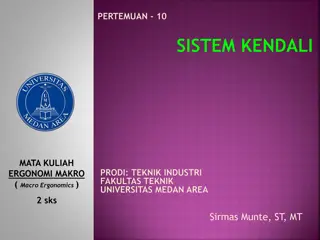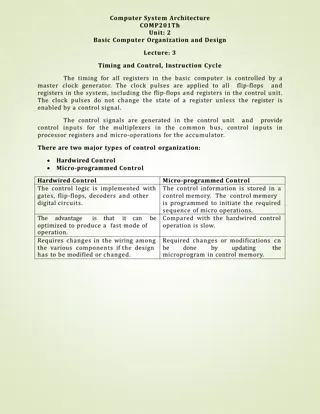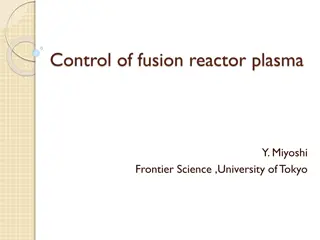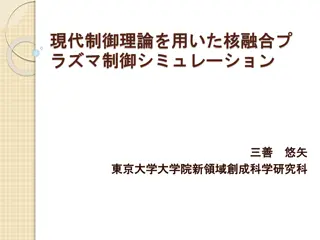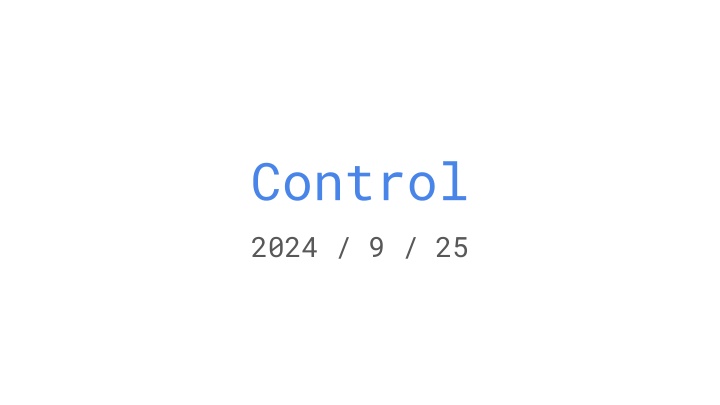
Control and Functions in Python Programming
Explore the concepts of control flow, function behaviors, and expressions in Python programming. Learn about the special value "None," pure functions vs. non-pure functions, nested expressions with print statements, and how control statements affect program execution.
Uploaded on | 3 Views
Download Presentation

Please find below an Image/Link to download the presentation.
The content on the website is provided AS IS for your information and personal use only. It may not be sold, licensed, or shared on other websites without obtaining consent from the author. If you encounter any issues during the download, it is possible that the publisher has removed the file from their server.
You are allowed to download the files provided on this website for personal or commercial use, subject to the condition that they are used lawfully. All files are the property of their respective owners.
The content on the website is provided AS IS for your information and personal use only. It may not be sold, licensed, or shared on other websites without obtaining consent from the author.
E N D
Presentation Transcript
Control 2024 / 9 / 25
Print and None Demo
None Indicates that Nothing is Returned The special value None represents nothing in Python A function that does not explicitly return a value will return None Careful: None is not displayed by the interpreter as the value of an expression >>> def does_not_return_square(x): ... x * x ... No return return None None value is not displayed >>> does_not_return_square(4) >>> sixteen = does_not_return_square(4) The name sixteen is now bound to the value None sixteen >>> sixteen + 4 Traceback (most recent call last): File "<stdin>", line 1, in <module> TypeError: unsupported operand type(s) for +: 'NoneType' and 'int' None
Pure Functions & Non-Pure Functions Pure Functions Pure Functions just return values Return value abs -2 2 Argument 2, 100 pow 1267650600228229401496703205376 2 Arguments Non Non- -Pure Functions Pure Functions have side effects Return None! print -2 A side effect isn't a value; it's anything that happens as a consequence of calling a function None Python displays the output -2
Nested Expressions with Print >>> print(print(1), print(2)) 1 2 None None Does not get displayed print None, None None None display None None print(print(1), print(2)) func print(...) None None print(1) print(2) func print(...) 2 func print(...) 1 print print 2 1 None None display 1 display 2
print print vs return return Demo
Control Expressions Expressions in programs evaluate to values Statements Statements are executed to perform actions Ex: assignment and def statements With what we have seen so far, a lot of useful programs have been left out For example: returning hot , warm , or cold depending on an argument temp To do this we introduce the concept of control Special expressions and statements can control how the program is executed by the interpreter
Conditional statements (if if statements) Clause Syntax: Syntax: if <conditional expression>: <suite of statements> elif <conditional expression>: <suite of statements> else: <suite of statements> Always start with if clause Zero or more elif clauses Zero or one else clause, always at the end Execution Rule for Conditional Statements: Execution Rule for Conditional Statements: Each header is considered in order 1. Evaluate the header s conditional expression if the header is not an else else 2. If the expression evaluates to true or the header is an else, execute the suite and skip the remaining headers
if if examples Demo
Boolean Contexts def absolute_value(x): Return the absolute value of x. if x < 0: Two boolean contexts return -x elif x == 0: return 0 else: George Boole return x Boolean context is any place where an expression is evaluated to check if it s a True value or a False value False values in Python: False, None, 0, (more to come) True values: everything else
Boolean Expressions Boolean expressions contain special operators and, or, not <exp1> and <exp2> and <exp3> and ... Evaluate to the first false value. If none are false, evaluates to the last expression <exp1> or <exp2> or <exp3> or ... Evaluate to first true value. If none are true, evaluates to the last expression not <exp> Evaluates to True if <exp> if a false value and False if <exp> is a true value
Short-Circuiting Demo
Iteration Demo
Demo While statements i, total = 0, 0 while i < 3: i = i + 1 total = total + i Execution Rule for While Statements: Execution Rule for While Statements: 1. Evaluate the header s expression 2. If it is a true value, execute the (whole) suite, then return to step 1 Python Tutor
The Fibonacci Sequence 0, 1, 1, 2, 3, 5, 8, 13, 21, 34, 55, 89, 144, 233, 377, 610, 987, ... def fib(n): """Compute the nth Fibonacci number, for N >= 1""" pred, curr = 0, 1 # 0th and 1st Fibonacci numbers k = 1 # curr is the kth Fibonacci number while k < n: pred, curr = curr, pred + curr k = k + 1 return curr The next Fibonacci number is the sum of the current one and its predecessor Python Tutor
Summary print vs None None represents when an expressions doesn t evaluate to a value print displays values in the interpreter Control Allow for the interpreter to selectively or repetitively execute parts of a program Iteration A particular variant of control which is based in the idea of repeating operations to compute a value



